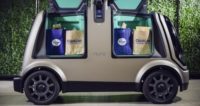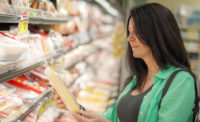Millennials worldwide are ready to try autonomous delivery, with 59% of consumers finding the concept either very or somewhat appealing, according to research conducted by GlobalData, UK. However, boomers and the silent generation are yet to be convinced.
The report, “ForeSights: Food Delivery by Drones,” highlighted that drones could totally change how goods are transported, including by using less fuel, providing shorter delivery times and helping to reduce congestion on roads. Plus, the futuristic image of a drone delivering parcels could attract many consumers fascinated by innovation and the latest technology, or those who simply want to try new concepts.
However, older generations may need to be convinced. The survey found only 28% of boomers and 14% of the silent generation consumers found autonomous delivery to be either very appealing or somewhat appealing, compared with Millennials (59%) and generation Z consumers (56%). Delivery companies wanting to attract the older generations should focus on highlighting drones’ ability to decrease delivery times and reduce costs, as a notably high proportion of boomers (69%) and silent generation (64%) consumers globally say they are always or often influenced by how a product/service aligns with their time and money constraints.
Younger generations’ greater focus on the environmental impact of services may influence their acceptance of automated delivery such as drones, with findings from the consumer survey stating that 55% of Millennials and 45% of generation Z consumers are always or often influenced by how environmentally friendly a service is, compared to 43% and 33% of boomers and silent generation consumers, respectively. To strengthen the service’s appeal to younger customers, delivery companies should address environmental factors such as noise and air pollution.
“Delivery drones currently create relatively high levels of noise pollution, which is both an environmental and a social problem. This important issue needs to be tackled by investing in smaller and quieter equipment,” says Elena Mogoş, consumer analyst.
Food firms looking to enter the drone delivery market should also take customers' cooking preferences into account when finding new opportunities in the market. For instance, the survey found that 74% of people prefer cooking a meal from scratch at home, compared with 4% of consumers across all generations preferring to order a meal delivery or take-away from a restaurant or café.
“Firms could try to lure consumers to order via drones, by offering home cooking packages with fresh ingredients such as the recipe boxes offered by meal kit companies. Furthermore, the novelty of drone delivery might encourage more consumers to choose to order meal delivery, especially if they have guests visiting. Seeing a drone transporting a fresh meal will feel futuristic and exciting, an opportunity companies can capitalize on,” adds Mogos.



